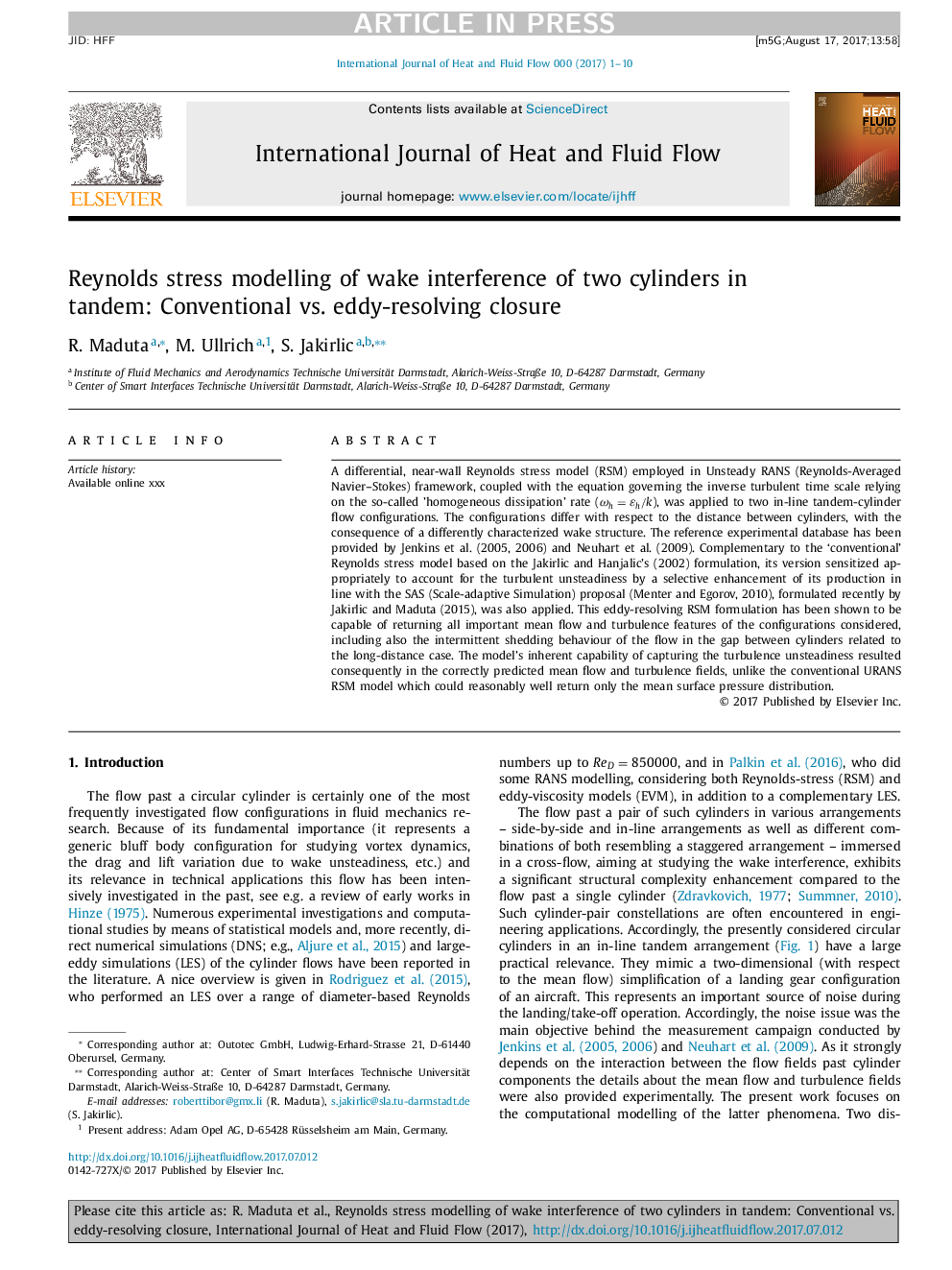| Article ID | Journal | Published Year | Pages | File Type |
|---|---|---|---|---|
| 7053583 | International Journal of Heat and Fluid Flow | 2017 | 10 Pages |
Abstract
A differential, near-wall Reynolds stress model (RSM) employed in Unsteady RANS (Reynolds-Averaged Navier-Stokes) framework, coupled with the equation governing the inverse turbulent time scale relying on the so-called 'homogeneous dissipation' rate (Ïh=Éh/k), was applied to two in-line tandem-cylinder flow configurations. The configurations differ with respect to the distance between cylinders, with the consequence of a differently characterized wake structure. The reference experimental database has been provided by Jenkins et al. (2005, 2006) and Neuhart et al. (2009). Complementary to the 'conventional' Reynolds stress model based on the Jakirlic and Hanjalic's (2002) formulation, its version sensitized appropriately to account for the turbulent unsteadiness by a selective enhancement of its production in line with the SAS (Scale-adaptive Simulation) proposal (Menter and Egorov, 2010), formulated recently by Jakirlic and Maduta (2015), was also applied. This eddy-resolving RSM formulation has been shown to be capable of returning all important mean flow and turbulence features of the configurations considered, including also the intermittent shedding behaviour of the flow in the gap between cylinders related to the long-distance case. The model's inherent capability of capturing the turbulence unsteadiness resulted consequently in the correctly predicted mean flow and turbulence fields, unlike the conventional URANS RSM model which could reasonably well return only the mean surface pressure distribution.
Related Topics
Physical Sciences and Engineering
Chemical Engineering
Fluid Flow and Transfer Processes
Authors
R. Maduta, M. Ullrich, S. Jakirlic,
